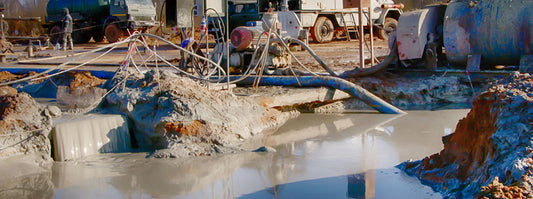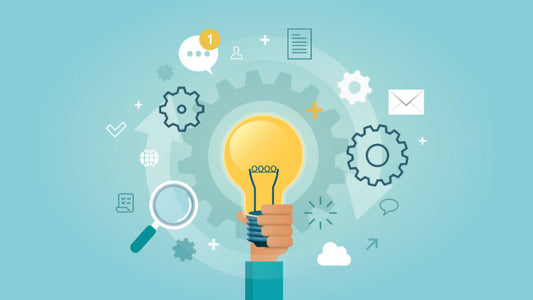Scientific Information
Air Sampling Calculator
This calculator tool will help you determine the sampling duration and flowrate needed to meet the limit of detection for your analysis method. Click to access the download
Air Sampling Calculator
This calculator tool will help you determine the sampling duration and flowrate needed to meet the limit of detection for your analysis method. Click to access the download

Why Ultra-Low-Level Microbes Still Matter in High-Control Environments
In pharmaceutical manufacturing, clinical environments, and precision electronics, the presence of unknown or extremophile microbes—even at minuscule levels—can trigger product recalls or batch failures, compromise patient safety, disrupt sterilization validations,...
Why Ultra-Low-Level Microbes Still Matter in High-Control Environments
In pharmaceutical manufacturing, clinical environments, and precision electronics, the presence of unknown or extremophile microbes—even at minuscule levels—can trigger product recalls or batch failures, compromise patient safety, disrupt sterilization validations,...

Advancing Microbial Detection in Bottled Water: Chinese Study Highlights the Power of the CP Select
Improved compliance with safety standards and reduced operational bottlenecks while delivering speed, sensitivity, and ease-of-use will shape the next generation of bottled water quality monitoring.
Advancing Microbial Detection in Bottled Water: Chinese Study Highlights the Power of the CP Select
Improved compliance with safety standards and reduced operational bottlenecks while delivering speed, sensitivity, and ease-of-use will shape the next generation of bottled water quality monitoring.

Spanish Water Utility Validates Concentrating Pipette for Surveillance of Legionella spp. and L. pneumophila
Legionella can be difficult to detect in large volumes of water, especially when present at low levels. To address this challenge, The water utility, Aigües de Barcelona, incorporated the InnovaPrep...
Spanish Water Utility Validates Concentrating Pipette for Surveillance of Legionella spp. and L. pneumophila
Legionella can be difficult to detect in large volumes of water, especially when present at low levels. To address this challenge, The water utility, Aigües de Barcelona, incorporated the InnovaPrep...

From Coop to Cave: Inside the High-tech Hunt for H5N1 and Disease X
Their mission? To detect zoonotic pathogens, those that jump from animals to humans—such as coronaviruses, H5N1 bird flu, and other emerging, unidentified viruses that could potentially spark “Disease X,”
From Coop to Cave: Inside the High-tech Hunt for H5N1 and Disease X
Their mission? To detect zoonotic pathogens, those that jump from animals to humans—such as coronaviruses, H5N1 bird flu, and other emerging, unidentified viruses that could potentially spark “Disease X,”

Concentrating Microbiologically Influenced Corrosion Bacteria from Oil & Gas Production Brine Using the Concentrating Pipette
The InnovaPrep Concentrating Pipette™ gives you a faster, more efficient way to concentrate microbes for MIC testing—without replacing your existing downstream tools.
Concentrating Microbiologically Influenced Corrosion Bacteria from Oil & Gas Production Brine Using the Concentrating Pipette
The InnovaPrep Concentrating Pipette™ gives you a faster, more efficient way to concentrate microbes for MIC testing—without replacing your existing downstream tools.

New Study Highlights Importance of Methods Used to Assess Water Treatment Efficacy
An Article published in the Journal of Virological Methods this week, included a new study led by researchers from the University of Arizona and our own InnovaPrep scientific team describing how...
New Study Highlights Importance of Methods Used to Assess Water Treatment Efficacy
An Article published in the Journal of Virological Methods this week, included a new study led by researchers from the University of Arizona and our own InnovaPrep scientific team describing how...

InnovaPrep Named to BioTools Innovator’s 2025 Cohort
We’re thrilled to announce that InnovaPrep has been selected by BioTools Innovator, as one of the Top 31 Life Science Tools and Diagnostics Companies for their 2025 cohort! BioTools Innovator is the...
InnovaPrep Named to BioTools Innovator’s 2025 Cohort
We’re thrilled to announce that InnovaPrep has been selected by BioTools Innovator, as one of the Top 31 Life Science Tools and Diagnostics Companies for their 2025 cohort! BioTools Innovator is the...

Airborne H5N1 Detected in Dairy Cow Study Using AirPrep™ Cub Samplers
The Vaccine and Infectious Disease Organization (VIDO), a global leader in infectious disease and vaccine development for humans and animals, conducted a controlled infectivity study in dairy cows to assess...
Airborne H5N1 Detected in Dairy Cow Study Using AirPrep™ Cub Samplers
The Vaccine and Infectious Disease Organization (VIDO), a global leader in infectious disease and vaccine development for humans and animals, conducted a controlled infectivity study in dairy cows to assess...

Arctic Snow Microbiome: A Metagenomic Study Employing Field Concentration Techniques and Next-Generation Sequencing
Researchers from the University of Vermont, aiming to uncover the hidden microbial world within Arctic snow, used cutting-edge, field-deployable technologies to perform metagenomic analyses, revealing a diverse array of microorganisms...
Arctic Snow Microbiome: A Metagenomic Study Employing Field Concentration Techniques and Next-Generation Sequencing
Researchers from the University of Vermont, aiming to uncover the hidden microbial world within Arctic snow, used cutting-edge, field-deployable technologies to perform metagenomic analyses, revealing a diverse array of microorganisms...

Intra-Hospital Dynamics of Viral Transmission and Evolution
Using advanced tools like the Concentrating Pipette™ and next-generation sequencing, the team fine-tuned their lab techniques and sampling schedule to get the most accurate picture possible. They collected samples frequently...
Intra-Hospital Dynamics of Viral Transmission and Evolution
Using advanced tools like the Concentrating Pipette™ and next-generation sequencing, the team fine-tuned their lab techniques and sampling schedule to get the most accurate picture possible. They collected samples frequently...
Strategies for Monitoring Airborne Plant Disease Pathogens & Pollens
Guidance document: Strategies for Monitoring Airborne Plant Disease Pathogens & Pollens
Strategies for Monitoring Airborne Plant Disease Pathogens & Pollens
Guidance document: Strategies for Monitoring Airborne Plant Disease Pathogens & Pollens

